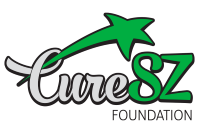精神分裂症的阴性症状

作者:Henry A. Nasrallah,医学博士
CURESZ 基金会执行副总裁兼科学总监
Schizophrenia is a complex neuropsychiatric syndrome with multiple symptom domains. The most recognizable symptom cluster is psychosis (classically, hallucinations and delusions) which is the reason many patients are initially hospitalized. However, most patients with schizophrenia also suffer from three other symptom clusters including negative symptoms (deficits in normal brain function such as lack of motivation and interest that impair social and vocational functioning), cognitive impairments and mood symptoms. In fact, the negative and cognitive symptoms are what causes functional disability, even after the psychotic symptoms subside with antipsychotic medications.
Negative symptoms were not widely recognized until the 1980’s. Prior to that, the focus in schizophrenia was on the psychotic symptoms (hallucinations and delusions). The persistence of negative symptoms after the psychosis is controlled led to many studies that characterized the various negative symptoms.
以下是精神分裂症的阴性症状,通常是由家属或精神科医生观察到的,而不是患者自己:
1. AFFECT PATHOLOGY This refers to a flat, blunted or restricted facial expression. In addition, other manifestations include poor eye contact, decreased spontaneous movements, monotone speech (referred to as aprosody), and failure to recognize the facial expression of other people (such as neutral, angry, sad, disgusted or anxious).
2. ALOGIA Which is a reduction in the quantity of thought, and poverty of speech, including speaking in monosyllables rather than sentences. Sometimes, patients may suddenly stop speaking in mid-sentence (called “blocking”) which is an interruption of thought. There is often a prolonged pause before responding to a question.
3. 社交性 对建立社交关系或与他人互动的兴趣缺失或减少。患者也无法感受到与他人的亲密感。
4. 意志力和冷漠 丧失发起或坚持以目标为导向的活动的能力。这包括不洗澡、梳洗不当以及整天什么都不做,这些通常被误解为“懒惰”。
5. ANHEDONIA Which is the loss or reduction of the capacity to experience pleasure, manifested by lack of interest in enjoyable activities. This is also a decrease in sexual activity, interest or enjoyment. Unlike the anhedonia of depression, it is not reversible in most patients.
6. 注意力不集中 无法在合理的时间段内保持一项任务或投入/参与。患者似乎全神贯注于内部世界,排除外部任务。
7. ANOSOGNOSIA Also referred to as non-awareness of illness. The patient lacks insight into their illness or disability. It can also be regarded as a cognitive deficit. This lack of insight prevents patients from seeking treatment or help to alleviate symptoms or to solve personal problems. Anosognosia can be reversible with continuous adherence to antipsychotic therapy.
Researchers sometimes classify the above negative symptoms into two major subdivisions:
1. 表达减弱,包括情感扁平化和失语,以及
2. 冷漠/无意志,包括缺乏动力和不合群。
In contrast to “positive” psychotic symptoms for which dozens of medications are available, there are no treatments yet for negative symptoms. It is a huge unmet need in the field of schizophrenia. So far, many attempts have been futile in developing a pharmacological treatment for negative symptoms. Thus, psychotherapy is the main approach to help patients recognize and overcome their negative symptoms. Occupational and recreational therapies can also be helpful. There are a couple of promising medications on the horizon. However, the FDA has not approved any of these yet.

